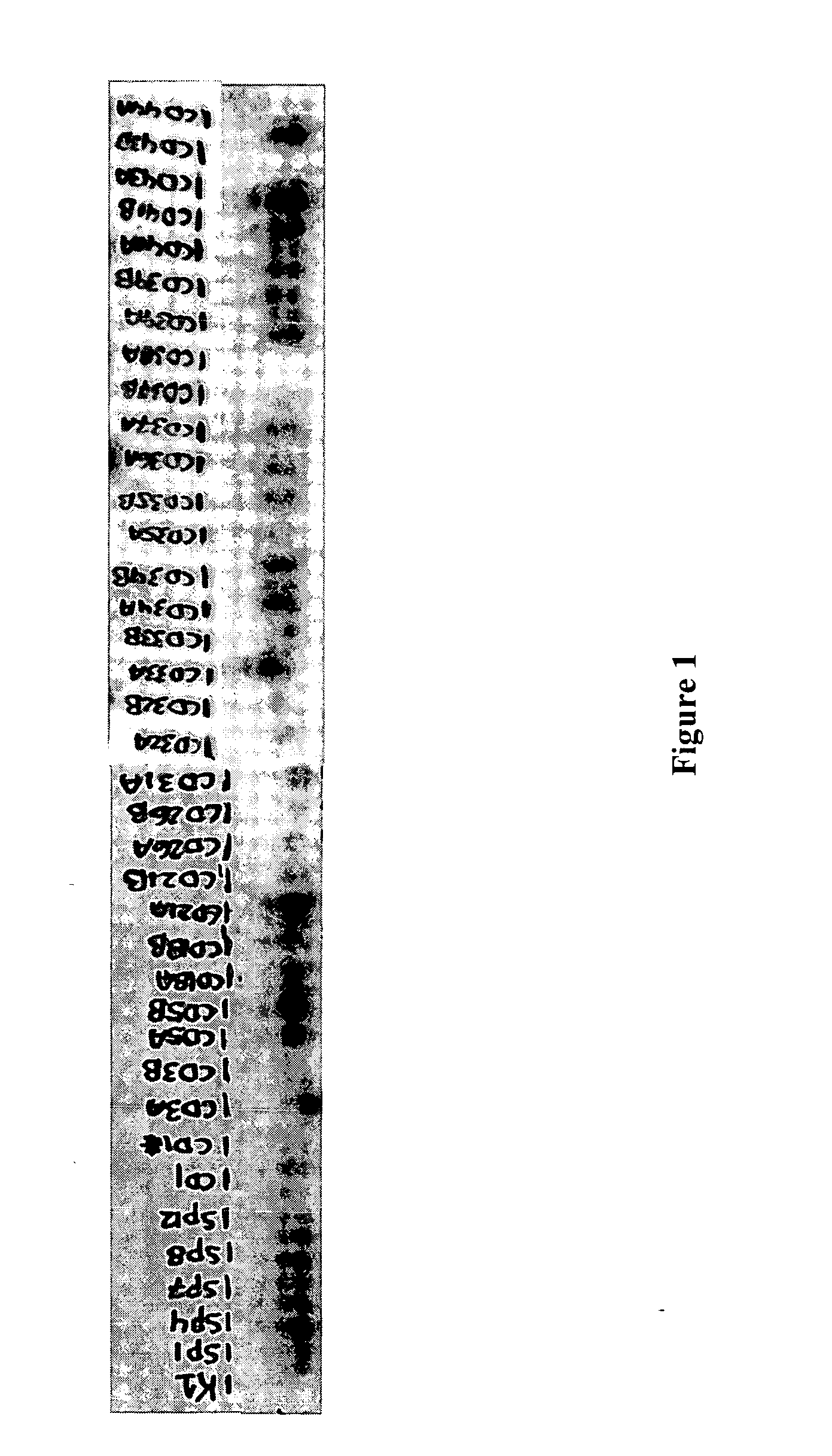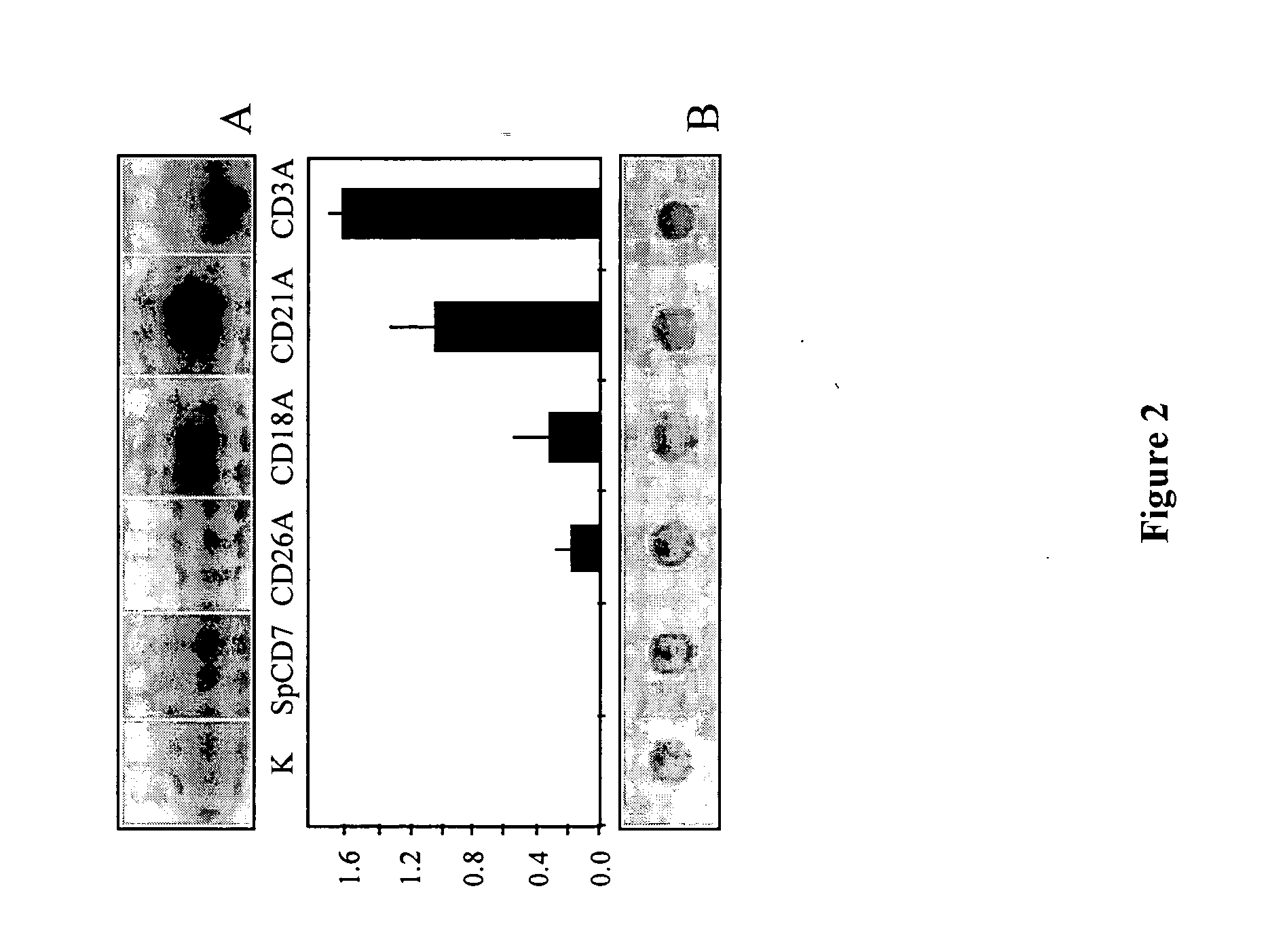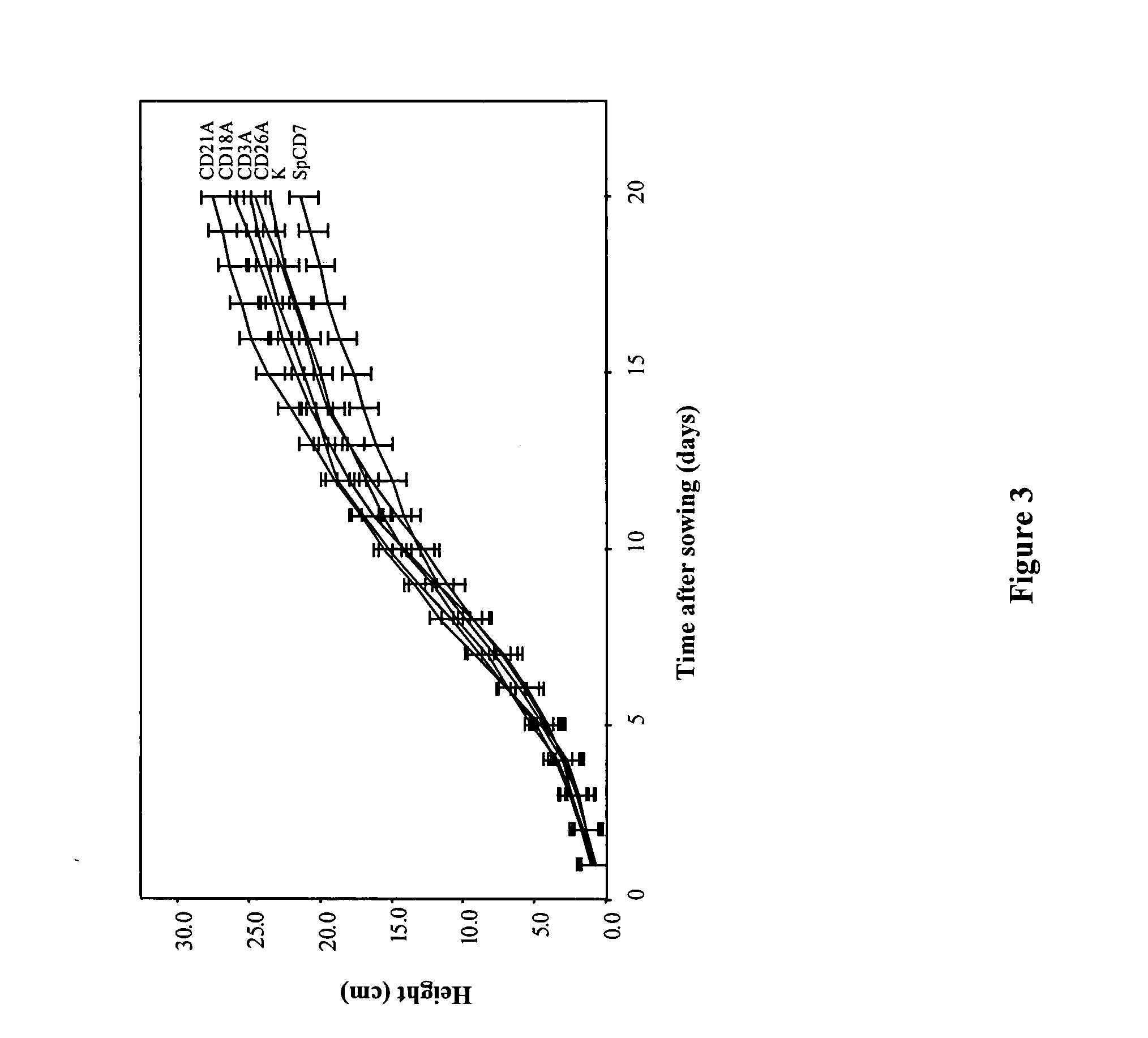Method for increasing protein content in plant cells
a plant cell and protein content technology, applied in the field of plant cell protein content increase, can solve the problems of hardly being used for endogenous protein stabilization, affecting the nutritional quality of crops, and insufficient protein content of plant cells and plants, so as to improve the agronomic value of any plant, increase the content of protein within the plant cell or the plant, and limit the degradation of heterologous effects
- Summary
- Abstract
- Description
- Claims
- Application Information
AI Technical Summary
Benefits of technology
Problems solved by technology
Method used
Image
Examples
example 1
[0043] Transgenic potato plants expressing tomato CDI, a cathepsin D inhibitor from tomato, Lycopersicon esculentum Mill.
[0044] To assess the onset of metabolic interference after ectopic expression of an aspartate protease inhibitor, tomato cathepsin D inhibitor (CD1) on host plant metabolism and endogenous protein stability in planta, two different gene constructs were introduced into potato (Solanum tuberosum cv Kennebec): one expressing the tomato cdi transgene under the control of the cauliflower mosaic virus 35S (CaMV35S) promoter; and one with the same transgene but with no promoter (transgenic controls; “SPCD” lines) (see Brunelle et al. 2004). For SPCD lines, a tomato CDI-encoding DNA sequence was isolated from the expression vector pGEX-3× / CDI (Brunelle et al. 1999) by digestion with BamHI and EcoRI, and subcloned between the BamHI and EcoRI cloning sites of the commercial vector pCambia 2300 (CAMBIA, Canberra, Australia). For CD plants, the CaMV35S promoter was isolated ...
example 2
[0050] Tomato CDI-Expressing Transgenic Potato Lines Exhibit Normal Growth and Development Rates
[0051] Growth parameters of selected CDI-expressing plants [chosen based on their content in tomato CDI; see. FIG. 2] were monitored daily for 20 days after tuber sowing, to detect eventual pleiotropic effects of recombinant CDI expressed in transgenic lines. Several individuals of each line were grown under greenhouse conditions under a 12 h / 12 h L:D photoperiod and a light intensity of 200 μmol m−2s−1, and monitored for various growth indicators. As shown on FIG. 3, growth rate, measured by plant's height over time, was not influenced by the inlibitor for all lines tested, even those expressing high amounts of cdi transcripts. Similarly, other parameters including tuber's germination time, number of leaves per plant, stem diameter and length of stem internodes were similar for all lines after 20 days (Table 1), indicating no visible pleiotropic effects of tomato CDI accumulated in the ...
example 3
[0052] Tomato CDI Accumulation in Transgenic Potato Leads to Increased Total Protein Content in Leaves
[0053] Considering that tomato CDI possesses protease inhibitory activity that may cause interference with endogenous proteases in potato, it was hypothesized that the expression of its cDNA-encoding sequence in the cytosol of transgenic potato plants may affect normal proteolysis of some endogenous proteins, resulting in an alteration of total protein composition and content. To assess this hypothesis, total protein content of fifteen potato clones selected based on expression of the cdi transgene (see Example I), and grown under greenhouse conditions, was determined in the 4th leaf. Leaf proteins were extacted as described earlier (Cloutier et al. 2000), and protein contents were determined according to Bradford (1976), with bovine serum albumin as a standard.
[0054] The results presented in FIG. 4A show that potato lines expressing CDI at a relatively high level (group “+++”) ha...
PUM
| Property | Measurement | Unit |
|---|---|---|
| Fraction | aaaaa | aaaaa |
| Content | aaaaa | aaaaa |
| Light intensity | aaaaa | aaaaa |
Abstract
Description
Claims
Application Information
 Login to View More
Login to View More - R&D
- Intellectual Property
- Life Sciences
- Materials
- Tech Scout
- Unparalleled Data Quality
- Higher Quality Content
- 60% Fewer Hallucinations
Browse by: Latest US Patents, China's latest patents, Technical Efficacy Thesaurus, Application Domain, Technology Topic, Popular Technical Reports.
© 2025 PatSnap. All rights reserved.Legal|Privacy policy|Modern Slavery Act Transparency Statement|Sitemap|About US| Contact US: help@patsnap.com



